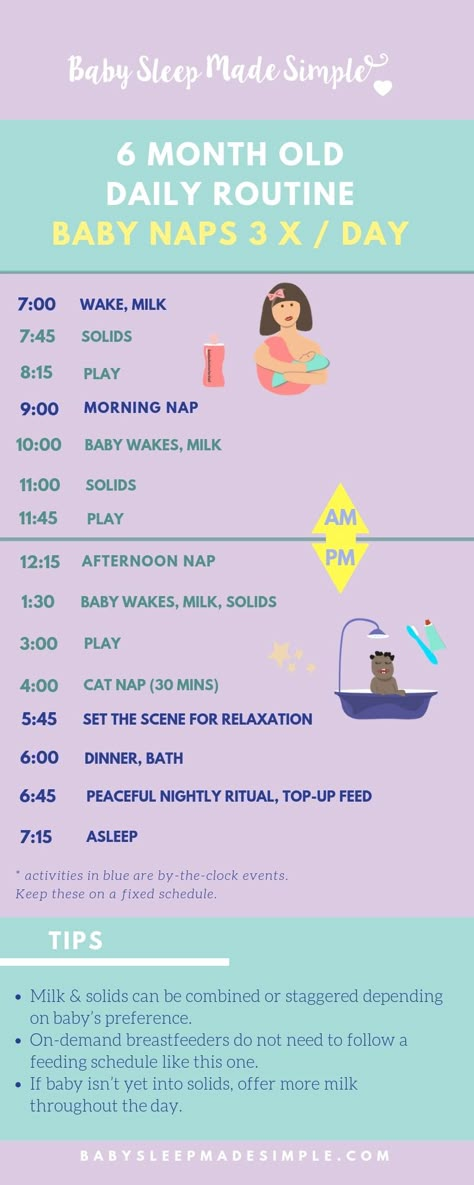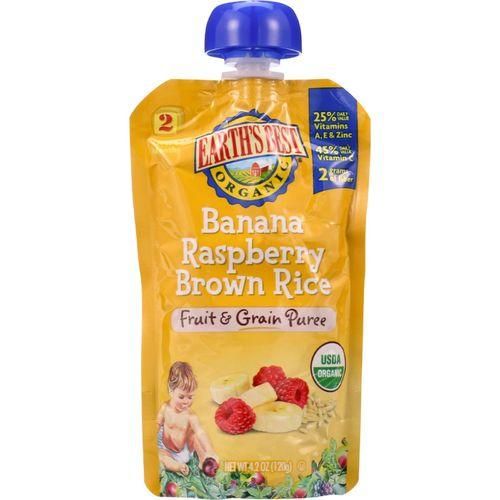Aldi baby food 4 months
Little Journey, Baby Food at ALDI!
Feeding a child is frustrating. Allegedly it takes 12 times for them to try certain foods before they will eat it. Tommy will love something one day, so I’ll go out and buy it in bulk and then refuse to eat it the next day.
Does he not like the taste? Is he not hungry? Is it not warm enough?
And then, when he doesn’t eat it, you know who does? I do. Even at 9 months old, I’m already eating Tommy’s leftovers. For now they are things like broccoli, eggs or peanut butter toast, not baby food purees obvi. Those get tossed if uneaten 24 hours after they are opened.
I think the food introduction phase kills me because I see how much food we waste. For every pouch I buy that Tommy refuses, I see myself throwing out $2 each time. I sorta feel the same way when I change his diaper and I feel like I didn’t really need too.
Luckily, I discovered a cheaper solution for trying and finding keepers
I’ve long been a fan of ALDI for their no frills store experience that passes on savings to their customers. Their prices are incredible. So I was excited when they recently announced the arrival of Little Journey, an award-winning line of baby products featuring everything from newborn diapers to wipes, formula and organic puree pouches.
The best part is that you’ll find a growing list of premium products exclusively available at ALDI at prices up to 50% less than those at traditional grocery stores*. So hopefully once you find a few things your kiddo likes, you can keep buying them while staying on budget.
This makes going through diapers faster than you thought humanly possible not so bad.
Diapers at ALDI range in price from $4.99 to $12.49 depending on the size and pack quantity. They boast a stretchable waist and side panels, dual leg cuffs, 12-hour leak protection, vitamin E and aloe and are hypoallergenic.
We tried them out and are happy to report back that Tommy had no leakage, blow outs or rashes!
I was impressed by the wipes especially.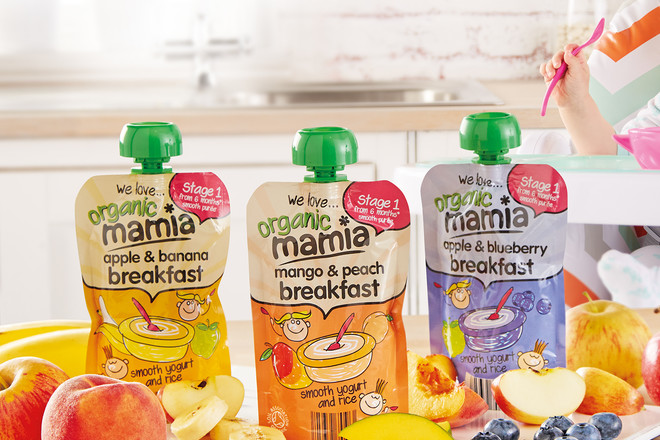 For a pack of 72, they cost $1.29. As someone who uses wipes on everything, this is an amazing deal.
For a pack of 72, they cost $1.29. As someone who uses wipes on everything, this is an amazing deal.
I am still breastfeeding Tommy but I can imagine that the formula is a huge saving compared to Enfamil or Similac at a regular grocery store.
My favorites are the organic pouches which each cost only $0.79 per 4 oz. Tommy runs hot or cold on pouches but he really likes these especially the apple, pear and spinach! They are made with pure fruit and vegetable combinations, without genetically engineered ingredients and BPA free packaging.
I like pouches because they introduce vegetables like spinach to Tommy that he otherwise wouldn’t be eating on a regular basis. I know I can make food from scratch with spinach but a good pouch is easy.
Tommy also is really into eating with his own fingers so the puffs and munchers are awesome. Both cost $1.39 for a 1.48 oz package. Tommy would eat only cheese puffs if I’d let him.
If you haven’t been to ALDI before, you are in for a shocking surprise as to how affordable grocery shopping really can be.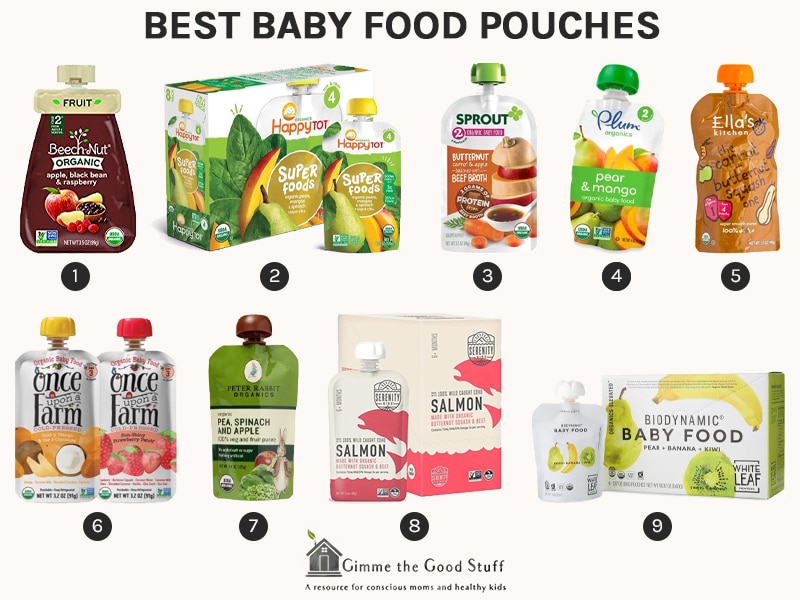 Some things to note before you go is that you’ll need a quarter to grab a shopping cart at the start of your experience, your own bags and that the unique shelving is to save money. Everything they do is to reduce their costs to run a business to keep the products priced low.
Some things to note before you go is that you’ll need a quarter to grab a shopping cart at the start of your experience, your own bags and that the unique shelving is to save money. Everything they do is to reduce their costs to run a business to keep the products priced low.
You can find an ALDI located near you by checking this location finder. If you haven’t been, you really ought to go and check it out. They have some of the best European chocolate! Curious what it looks like to shop at ALDI? I shot this video a few years ago.
This post is sponsored by ALDI. All thoughts and opinions are my own.
*Based upon a price comparison of comparable products sold at leading national retail grocery stores.
Tweet
The Best Aldi Baby Food for Starting Solids
Starting solid food with your baby can feel completely overwhelming. I know when I first started solids with my baby, I had no clue where to start when it came to grocery shopping for a baby. We knew we wanted to try baby led weaning but I didn’t know what foods were best and what serving sizes to give my baby.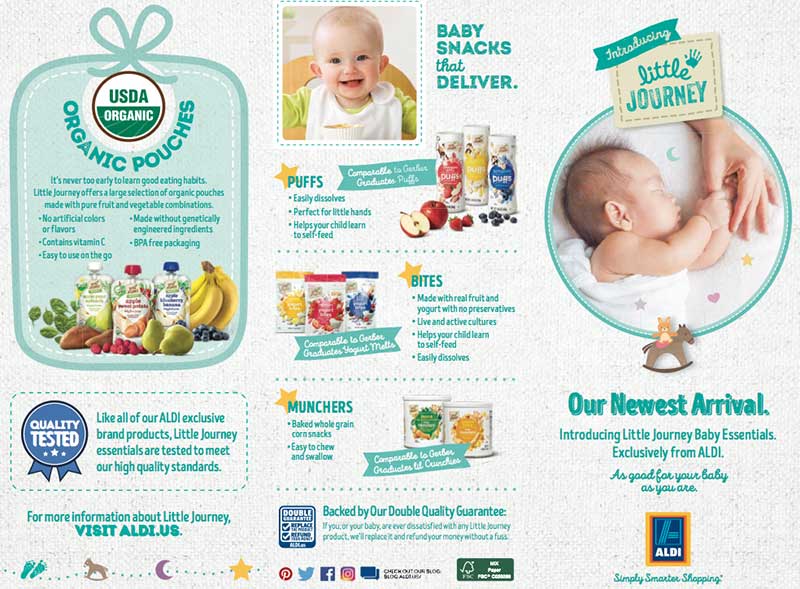 I have always done our grocery shopping at Aldi and after a few months of trial and error, I have found the best Aldi baby food for baby led weaning.
I have always done our grocery shopping at Aldi and after a few months of trial and error, I have found the best Aldi baby food for baby led weaning.
First, a small disclaimer. I am NO doctor. Just a mama who has found what works for her baby and is sharing what I’ve learned. There’s about 100 different books and articles that will tell you how to feed your baby but the reality is, you have to find what works best for you and your child. Some babies are ready to start solids at six months and some aren’t until seven or eight months. There are some babies who love gobbling up steamed vegetables and teething biscuits right away while others prefer purees. Talk to your doctor and read your baby’s signs to decide how and when to begin. After all, no one knows your baby better than you.
As I said before, we wanted to start solids by trying baby led weaning. In short, baby led weaning is where you give your child solid food that is cooked and cut into easy to mash and grab pieces. It fine tunes their motor skills and helps teach your baby portion control since they are in charge of feeding themselves. I will be sharing more about our experience with baby led weaning in a future post. For now, I have put together a grocery list for the best Aldi baby food for baby led weaning in hopes to help all of the moms who need some baby food ideas on a budget.
It fine tunes their motor skills and helps teach your baby portion control since they are in charge of feeding themselves. I will be sharing more about our experience with baby led weaning in a future post. For now, I have put together a grocery list for the best Aldi baby food for baby led weaning in hopes to help all of the moms who need some baby food ideas on a budget.
The Perfect Starter for Solid Food
My absolute favorite Aldi baby food are these Simply Nature vegetable bites. These were the best starter food for baby led weaning. They’re made out of simple ingredients: vegetables and a few spices. Plus, these bites take only seconds to microwave which makes them great for when you are trying to throw dinner together for the whole family. A HUGE time saver.
Once cooked, they have a firm enough consistency for baby to grab them but will mush between their fingers and in their mouths. When we first started giving our baby these, she would eat maybe half but loved playing with them and getting used to the texture of food. After a few weeks she was eating two bites at meal time!
After a few weeks she was eating two bites at meal time!
The Simply Nature bites taste good, are full of nutrients, and are easy for baby to eat. I even love eating her leftovers. It makes for the PERFECT starter baby food. I have recommended these to every one of my mom friends because my baby simply can’t get enough of them.
Find them in the frozen section at Aldi.
Easy Baby Food for on the Go
Although my baby preferred solid foods to start out, she now loves these puree pouches. If your baby prefers purees, these will be perfect for you. At first I would squeeze them into her mouth but at only eight months old she has learned how to hold her own pouch and suck out the contents. I know these aren’t exactly “baby led weaning” but they are such an easy and convenient baby food for when you are on the go and can’t let your baby get messy.
Spoon Fed Aldi Baby Food Favorites
It may not seem like the obvious baby food choice, but Aldi has great potato and chicken salad.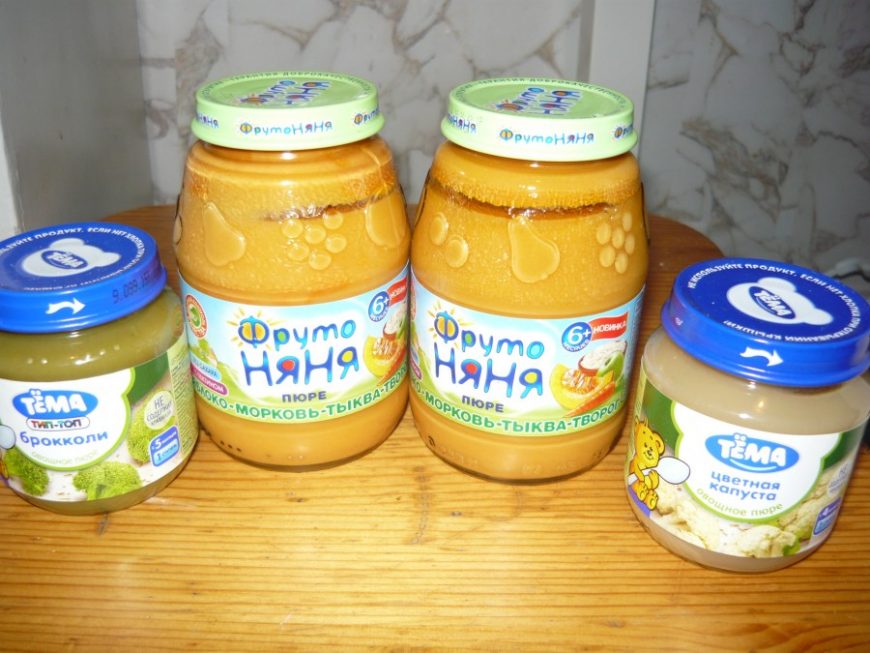 My baby loves both of these and it’s a great way to sneak in flavorful protein and dairy. Also, don’t forget the bib, this one will get MESSY. My favorite types of bibs are sleeved and washable like this one. They keep the mess off of the baby and they’re easy to clean. Plus, when your child gets older they can be used for painting and messy craft projects too!
My baby loves both of these and it’s a great way to sneak in flavorful protein and dairy. Also, don’t forget the bib, this one will get MESSY. My favorite types of bibs are sleeved and washable like this one. They keep the mess off of the baby and they’re easy to clean. Plus, when your child gets older they can be used for painting and messy craft projects too!
Quick and Nutrient Dense Aldi Baby Food
The most important part of your babies diet is vegetables. However, it can be a giant pain (and super time consuming) to cut, peel, and cook raw vegetables. To save time, I get the steam-able packs in the frozen section at Aldi. They are good grabbing size for baby led weaning. I got lucky and my baby LOVES broccoli so she eats a lot of that at our house. One bag can last 3-4 meals (even for our broccoli loving baby) making it well worth the money for the convenience of the steam-able bag.
Dry Snacks
Once your baby gets more comfortable eating solid food, these are great snack options to throw in the diaper bag. The puffs are a popular baby food and Aldi has their own version in strawberry apple and blueberry. If you don’t mind letting your baby have some salt, I also recommend veggie straws or vegetable crisps. They all melt down as the baby gums or chews on them and the straws are easier for younger babies to grab than the tiny puffs.
The puffs are a popular baby food and Aldi has their own version in strawberry apple and blueberry. If you don’t mind letting your baby have some salt, I also recommend veggie straws or vegetable crisps. They all melt down as the baby gums or chews on them and the straws are easier for younger babies to grab than the tiny puffs.
I wish you the best of luck, mama! Remember to be patient, keep trying new things, and most importantly, trust your instincts.
Have you started solids yet? Tell me what works for you or what your baby has loved.
Check out my other favorite products for being successful at starting solids:
need it later? pin it.
Diet for a 4-6 month old baby
Your baby is already 4 months old. He has noticeably grown up, become more active, is interested in objects that fall into his field of vision, carefully examines and reaches for them. The emotional reactions of the child have become much richer: he joyfully smiles at all the people whom he often sees more and more often, makes various sounds.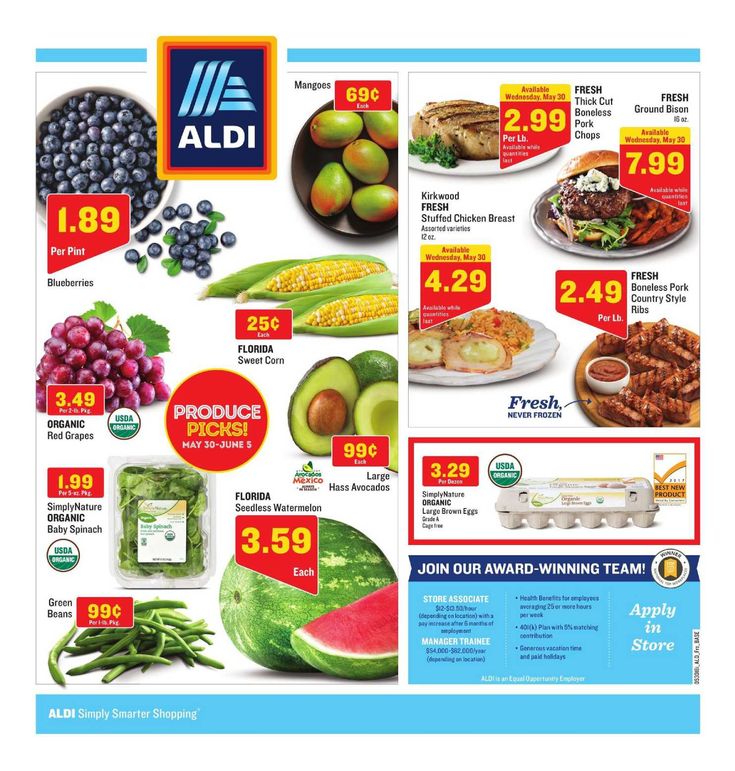
You are still breastfeeding your baby or have had to switch to mixed or formula feeding. The child is actively growing, and only with breast milk or infant formula, he can no longer always get all the necessary nutrients. And that means it's time to think about complementary foods.
The optimal time to start its introduction is between 4 and 6 months, regardless of whether the baby is receiving breast milk or formula. This is the time when children respond best to new foods. Up to 4 months, the child is not yet ready to perceive and digest any other food. And with the late introduction of complementary foods - after 6 months, children already have significant deficiencies of individual nutrients and, first of all, micronutrients (minerals, vitamins, long-chain polyunsaturated fatty acids, etc.). In addition, toddlers at this age often refuse new foods, they have delayed development of chewing skills for thick foods, and inadequate eating habits are formed. It is important to know that, no matter how strange it may seem at first glance, with a delayed appointment of complementary foods, allergic reactions more often occur on them.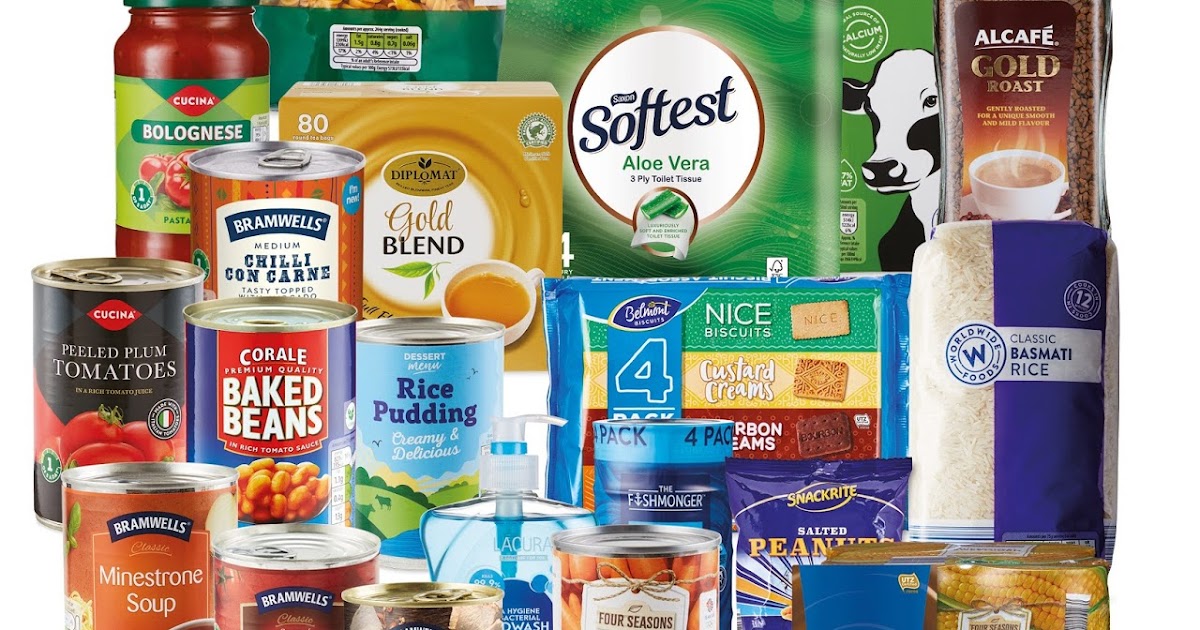
When is it advisable to introduce complementary foods as early as 4 months, and when can you wait until 5.5 or even 6 months? To resolve this issue, be sure to consult a pediatrician.
As a rule, at an earlier age (4 - 4.5 months), complementary foods are introduced to children at risk of developing iron deficiency anemia, as well as children with insufficient weight gain and with functional digestive disorders.
The optimal time to start complementary foods for a healthy baby is between 5 and 5.5 months of age.
The World Health Organization recommends that breastfed babies should be introduced to complementary foods from 6 months of age. From the point of view of domestic pediatricians, which is based on extensive practical experience and scientific research, this is possible only in cases where the child was born on time, without malnutrition (since in these cases the mineral reserves are very small), he is healthy, grows well and develops. In addition, the mother should also be healthy, eat well and use either specialized enriched foods for pregnant and lactating women, or vitamin and mineral complexes in courses.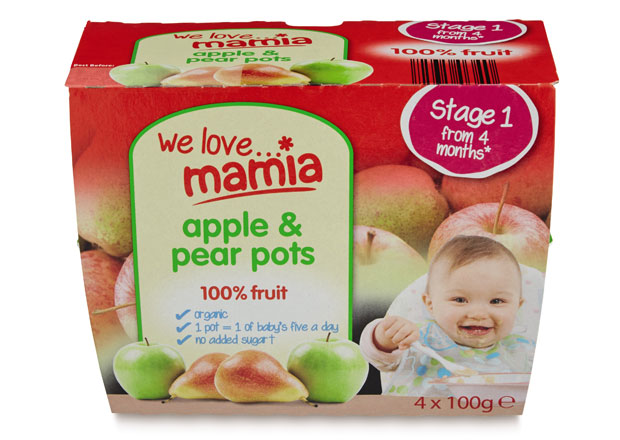 Such restrictions are associated with the depletion of iron stores even in a completely healthy child by 5-5.5 months of age and a significant increase in the risk of anemia in the absence of complementary foods rich or fortified with iron. There are other deficits as well.
Such restrictions are associated with the depletion of iron stores even in a completely healthy child by 5-5.5 months of age and a significant increase in the risk of anemia in the absence of complementary foods rich or fortified with iron. There are other deficits as well.
The first complementary food can be vegetable puree or porridge, fruit puree is better to give the baby later - after tasty sweet fruits, children usually eat vegetable puree and cereals worse, often refuse them altogether.
Where is the best place to start? In cases where the child has a tendency to constipation or he puts on weight too quickly, preference should be given to vegetables. With a high probability of developing anemia, unstable stools and small weight gains - from baby cereals enriched with micronutrients. And if you started introducing complementary foods with cereals, then the second product will be vegetables and vice versa.
If the first complementary food is introduced at 6 months, it must be baby porridge enriched with iron and other minerals and vitamins, the intake of which with breast milk is no longer enough.
Another important complementary food product is mashed meat. It contains iron, which is easily absorbed. And adding meat to vegetables improves the absorption of iron from them. It is advisable to introduce meat puree to a child at the age of 6 months. Only the daily use of children's enriched porridge and meat puree can satisfy the needs of babies in iron, zinc and other micronutrients.
But it is better to introduce juices later, when the child already receives the main complementary foods - vegetables, cereals, meat and fruits. After all, complementary foods are needed so that the baby receives all the substances necessary for growth and development, and there are very few in their juices, including vitamins and minerals.
Juices should not be given between feedings, but after the child has eaten porridge or vegetables with meat puree, as well as for an afternoon snack. The habit of drinking juice between meals leads to frequent snacking in the future, a love of sweets is instilled, children have more tooth decay and an increased risk of obesity.
With the start of the introduction of complementary foods, the child is gradually transferred to a 5-time feeding regimen.
Rules for the introduction of complementary foods:
- preference should be given to baby products of industrial production, they are made from environmentally friendly raw materials, have a guaranteed composition and degree of grinding
- Complementary foods should be offered to the baby by spoon at the start of feeding, before breastfeeding (formula feeding)
- the volume of the product increases gradually, starting with ½ - 1 spoon, and in 7 - 10 days we bring it to the age norm, subsequent products within the same group (cereals from other cereals or new vegetables)
- can be entered faster, in 5 - 7 days
- start introduction with monocomponent products
- it is undesirable to give a new product in the afternoon, it is important to follow how the child reacts to it
- do not introduce new products in the event of acute illnesses, as well as before and immediately after prophylactic vaccination (should be abstained for several days)
When introducing a new type of complementary food, first try one product, gradually increasing its amount, and then gradually “dilute” this product with a new one. For example, vegetable complementary foods can be started with a teaspoon of zucchini puree. During the week, give the baby only this product, gradually increasing its volume. After a week, add a teaspoon of mashed broccoli or cauliflower to the zucchini puree and continue to increase the total volume every day. Vegetable puree from three types of vegetables will be optimal. The portion should correspond to the age norm. Over time, you can replace the introduced vegetables with others faster.
For example, vegetable complementary foods can be started with a teaspoon of zucchini puree. During the week, give the baby only this product, gradually increasing its volume. After a week, add a teaspoon of mashed broccoli or cauliflower to the zucchini puree and continue to increase the total volume every day. Vegetable puree from three types of vegetables will be optimal. The portion should correspond to the age norm. Over time, you can replace the introduced vegetables with others faster.
After the introduction of one vegetable (bringing its volume to the required amount), you can proceed to the intake of porridge, and diversify the vegetable diet later.
If the child did not like the dish, for example, broccoli, do not give up and continue to offer this vegetable in a small amount - 1-2 spoons daily, you can not even once, but 2-3 times before meals, and after 7 - 10, and sometimes 15 days, the baby will get used to the new taste. This diversifies the diet, will help to form the right taste habits in the baby.
Spoon-feeding should be done with patience and care. Forced feeding is unacceptable!
In the diet of healthy children, porridge is usually introduced after vegetables (with the exception of healthy breastfed children, when complementary foods are introduced from 6 months). It is better to start with dairy-free gluten-free cereals - buckwheat, corn, rice. At the same time, it is important to use porridge for baby food of industrial production, which contains a complex of vitamins and minerals. In addition, it is already ready for use, you just need to dilute it with breast milk or the mixture that the baby receives.
Children suffering from food allergies are introduced complementary foods at 5-5.5 months. The rules for the introduction of products are the same as for healthy children, in all cases it is introduced slowly and begins with hypoallergenic products. Be sure to take into account individual tolerance. The difference is only in the correction of the diet, taking into account the identified allergens. From meat products, preference should first be given to mashed turkey and rabbit.
From meat products, preference should first be given to mashed turkey and rabbit.
Diets for different age periods
Explain how you can make a diet, it is better to use a few examples that will help you navigate in compiling a menu specifically for your child.
From 5 months, the volume of one feeding is on average 200 ml.
Option 1.
If your baby started receiving complementary foods from 4-5 months, then at 6 months his diet should look like this:
| I feeding 6 hours | Breast milk or VHI* | 200 ml |
| II feeding 10 hours | Dairy-free porridge** Supplementation with breast milk or VHI* | 150 g 50 ml |
| III feeding 14 hours | Vegetable puree Meat puree Vegetable oil Supplemental breast milk or VHI* | 150 g 5 - 30 g 1 tsp 30 ml |
| IV feeding 18 hours | Fruit puree Breast milk or VHI* | 60 g 140 ml |
| V feeding 22 hours | Breast milk or VHI* | 200 ml |
* - infant formula
** - diluted with breast milk or VHI
Option 2.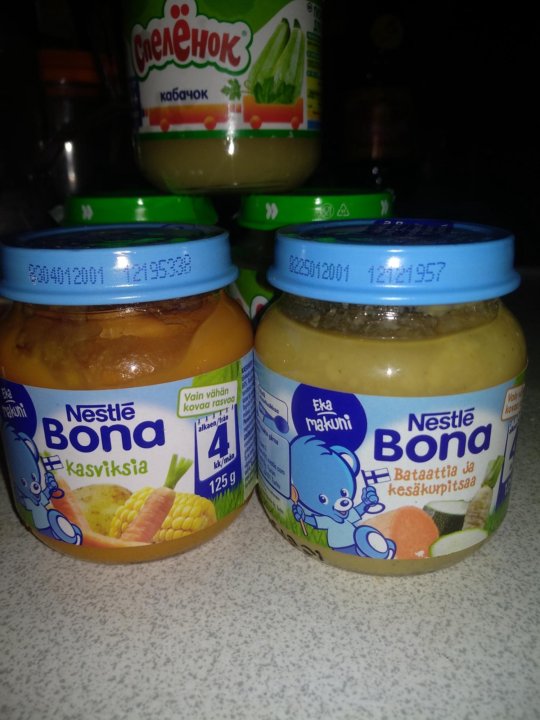
* - infant formula Option 3. : ** - diluted with breast milk Up to 7 months, increase the volume of porridge and vegetable puree to 150 g and introduce fruit puree. The materials were prepared by the staff of the Healthy and Sick Child Nutrition Laboratory of the National Research Center for Children's Health of the Ministry of Health of Russia and are based on the recommendations given in the National Program for Optimizing the Feeding of Children in the First Year of Life in the Russian Federation, approved at the XV Congress of Pediatricians of Russia (02.2009d.) Breast milk is the best food for your baby. It is recommended to start introducing complementary foods into the baby's diet no earlier than 4 months, but no later than 6 months*. At this age, the baby is in the active phase of development and reacts with curiosity to everything new! Some babies at 4 to 5 months of age can no longer satisfy their appetite with breast milk alone and need complementary foods for healthy growth. If your baby spits out the first spoonfuls of puree, be patient. After all, he must first learn to swallow it. Start with a few scoops and give your child time to get used to the new form of feeding. *Recommendation of the Nutrition Committee of the European Society of Pediatric Gastroenterology, Hepatology and Nutrition (ESPGHAN) After 4-6 months of life, mother's milk or milk formula alone is not enough to supply the child's body with all the nutrients and necessary energy. Gradually replace one breastfeed with complementary foods. First for lunch, then for dinner and finally for lunch. The mouse eats breakfast with the usual dairy food. Starting complementary foods with HiPP products is easy. The first spoons will be vegetable or fruit purees HiPP: We recommend that you start complementary foods at lunchtime with HiPP vegetable puree (for example, "Zucchini. My first puree", "Cauliflower. My first puree" or "Broccoli .My first puree"). Then, for satiety, feed your baby as always: breast or bottle. The amount of vegetable puree can be increased daily by 1 spoon. Be patient if your baby does not immediately love vegetables. If your baby tolerates vegetables well, in the third week you can introduce grain porridge into the diet, and as a dessert, offer a few spoons of fruit puree enriched with vitamin C. Vitamin C helps to better absorb iron in the body. Once your baby starts eating a whole serving of mashed potatoes for lunch, you can eliminate breast milk or formula during that meal. Tip: Reheat as much puree as needed for feeding. Store leftover puree in a sealed jar in the refrigerator. Use the contents of the opened jar within a day. Important! If you are using a microwave, please remove the lid before heating the puree. Stir after heating. To prevent damage to the jar, please use only a plastic spoon. Always check food temperature before feeding. I feeding
6 hours Breast milk or VHI* 200 ml II feeding
10 hours Dairy-free porridge**
Fruit puree 150 g
20 g III feeding
14 hours Vegetable puree
Meat puree Vegetable oil
Fruit juice 150 g
5 - 30 g
1 tsp
60 ml IV feeding
18 hours Fruit puree
Breast milk or VHI* 40 g
140 ml V feeding
22 hours Breast milk or VHI* 200 ml
** - diluted with breast milk or VMS 
I feeding
6 hours Breast milk II feeding
10 hours Dairy-free porridge**
Breast milk supplement 100 g III feeding
14 hours Vegetable puree
Meat puree Vegetable oil
Breast milk supplement 100 g
5 - 30 g
1 tsp IV feeding
18 hours Breast milk V feeding
22 hours Breast milk 
4 to 6 months
It is very important that the baby consumes breast milk for as long as possible. The right age to start complementary foods
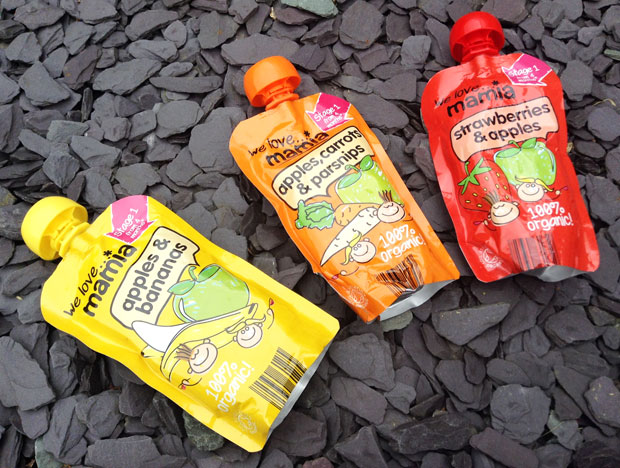 Other children have enough breast milk, and they are ready for the introduction of complementary foods only after 6 months. The decision to start complementary foods should always be made according to your baby's development. Do you feel like your baby is not getting enough breast milk? Does your baby hold his head on his own, show interest in new foods or a spoon? Then it's time to start feeding. If in doubt, consult your pediatrician.
Other children have enough breast milk, and they are ready for the introduction of complementary foods only after 6 months. The decision to start complementary foods should always be made according to your baby's development. Do you feel like your baby is not getting enough breast milk? Does your baby hold his head on his own, show interest in new foods or a spoon? Then it's time to start feeding. If in doubt, consult your pediatrician. Why is complementary foods important for the baby?
 In addition, the transition to solid food trains the muscles of the mouth. And finally, with the introduction of complementary foods, the child will get acquainted with the variety of taste directions, which is also important for his development.
In addition, the transition to solid food trains the muscles of the mouth. And finally, with the introduction of complementary foods, the child will get acquainted with the variety of taste directions, which is also important for his development. When to start complementary foods?
First step: lunch
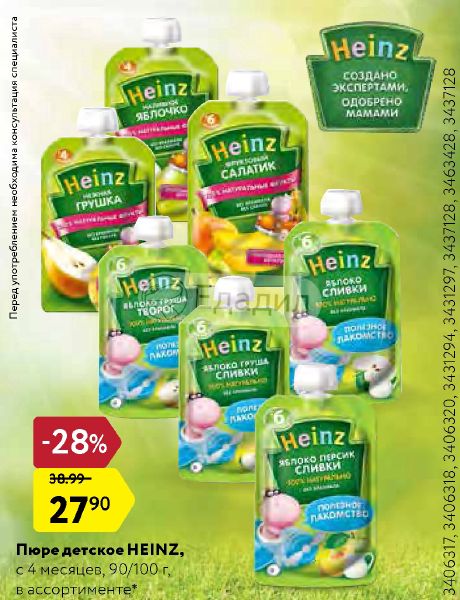 Try repeating the vegetable puree in the following days. Next week, you can expand your diet with other varieties of HiPP vegetables (for example, "Carrots. My first puree" or "Potatoes. My first puree").
Try repeating the vegetable puree in the following days. Next week, you can expand your diet with other varieties of HiPP vegetables (for example, "Carrots. My first puree" or "Potatoes. My first puree"). 

